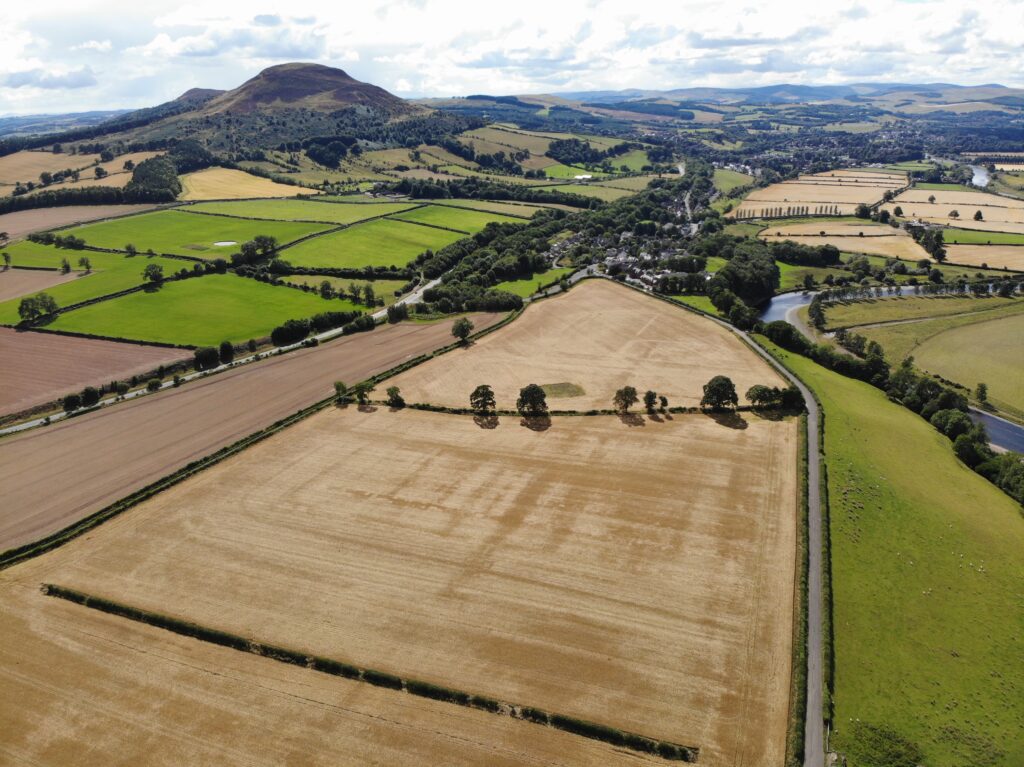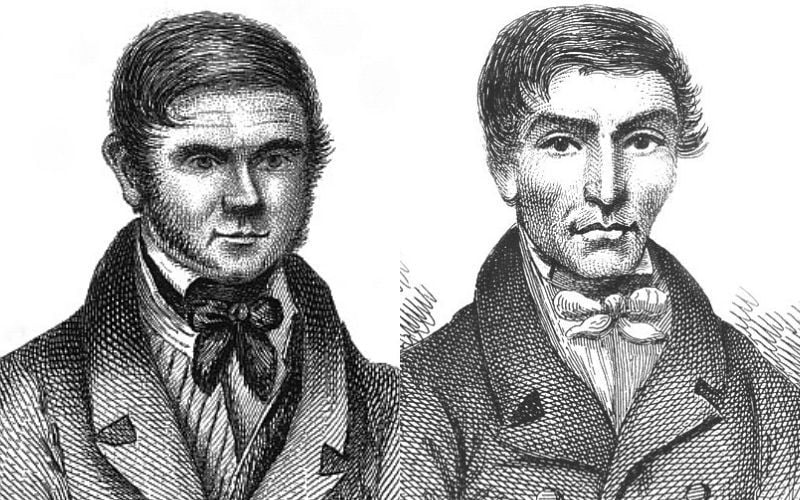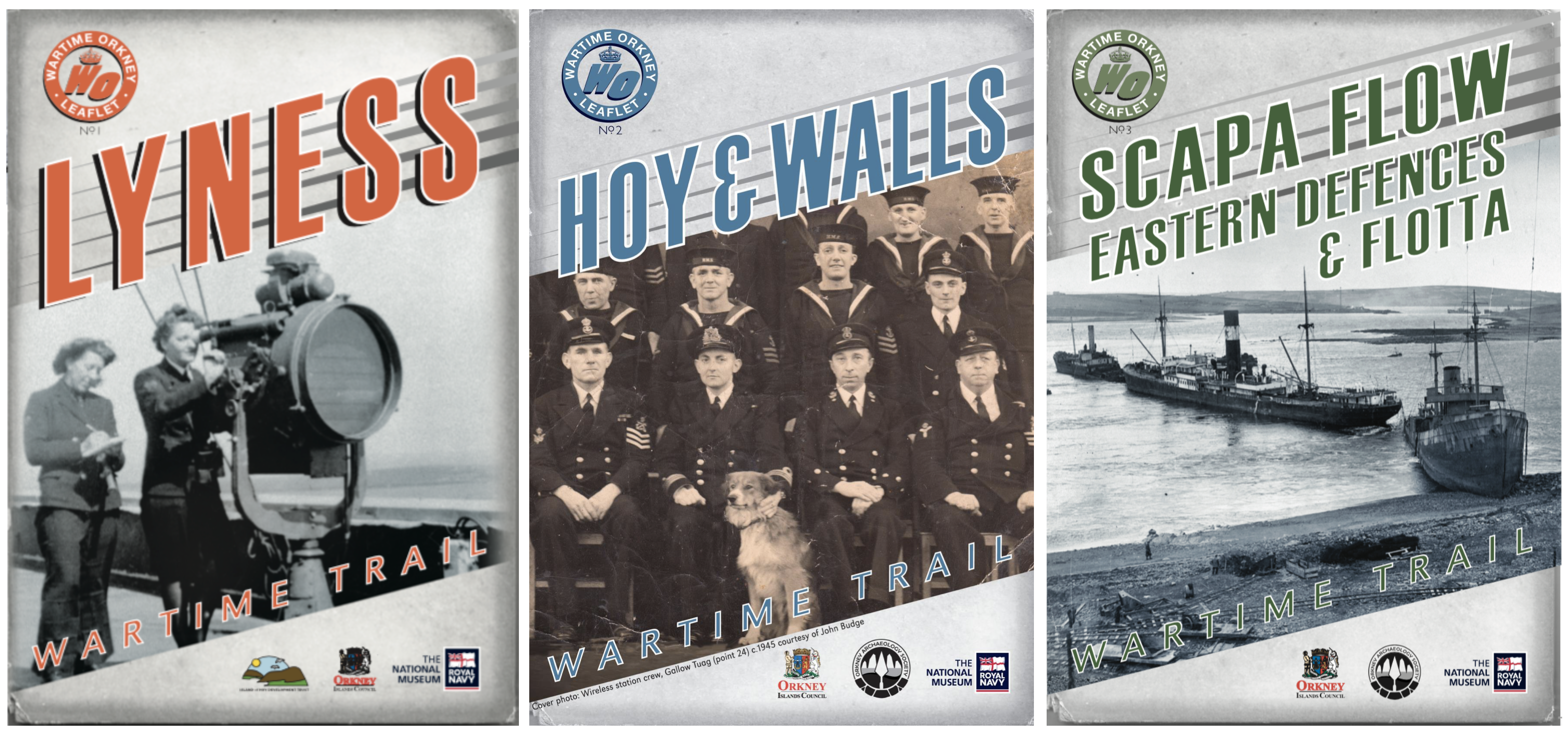Over £11,000 awarded to research projects exploring 13,000 years of Scotland’s past
The Society of Antiquaries of Scotland announced today that it has awarded funding to 10 projects committed to researching stories from Scottish history.
A total of £11,854.40 will be distributed by the Society to investigate the relationship between Iron Age communities and the Roman army almost 2,000 years ago, violent crime in Scotland across three centuries, the remains of wartime Orkney, and more.

The remains of Trimontium fort are still visible today from the air as cropmarks (© Trimontium Museum)
The Geographies of Power project investigates the relationship of local Iron Age communities with the western Roman Empire. It maps changes in settlement and economy to understand how Roman power exploited local resources, how local people may have profited from the new power balances, or whether Rome eradicated and displaced settlement.
Excavations in June 2023 at two enclosures at Bemersyde Hill, less than 3km away from the Roman fort at Newstead/Trimontium in the Scottish Borders, revealed evidence that has been interpreted as indicating a long-standing settlement in repeated contact with the Roman military. This site matches patterns seen by flourishing post-conquest settlements on the continent, rather than the rapidly abandoned landscapes observed immediately north of Hadrian’s Wall.
Society funds will allow for geochemical analysis of soil samples from the site that could identify areas of intensive use relating to, for example, animal penning, food processing, and craft-working, which would feed into understanding the longevity, character, and complexity of local occupation or abandonment in the proximity of Trimontium.

William Burke, left, and William Hare, right.
The Society will also fund research that will contribute to the upcoming book Scottish History in 15 Violent Crimes, due to be published by Bloomsbury Press in 2025. Each of the fifteen chapters will describe an individual case and will explore developments in society and the law surrounding that case. The selected case studies from 1709 to 1989 (including the crimes of famous 19th-century body snatchers William Burke and William Hare) cover three centuries and themes such as misogyny, poverty, class conflict, patriarchy, xenophobia, and more.
These cases will allow wider discussion of advances in forensic investigation, developments in societal and judicial responses to violent crime, as well as changing contemporary social and legal attitudes towards gender, sexuality and ethnicity.

The covers of the first three leaflets in the series.
The Wartime Orkney Leaflet No.4 project will explore how the physical and social landscape of the Orkney Islands was affected by the threat of war in the 20th century. The sheltered natural harbour of Scapa Flow was the Royal Navy’s main Fleet base during both World Wars. The loss of HMS Royal Oak in October 1939 and a series of air raids led to the islands becoming one of the most heavily militarised parts of the UK. Homes and farmland were requisitioned and the population of 22,000 islanders was outnumbered by the arrival of c.40,000 military personnel. The landscape was transformed by thousands of structures including command centres, fuel stores, power stations, railways, accommodation huts, gun emplacements, airfields, piers, barrage balloon sites, radio stations and the Churchill Barriers.
At the end of hostilities most of the armed services departed. Their buildings and installations were demolished, scrapped, re-purposed or left to decay. The remaining earthworks and concrete structures have become enduring monuments to the military presence; it is possible that traces of these will persist for at least as long as the Neolithic sites for which Orkney is better known. The utilitarian, temporary and sometimes considered “ugly” nature of military installations lead to such sites being overlooked and then forgotten, despite their significance and enduring impact on the landscape.
A grant from the Society will fund the development of a free self-guided wartime trail leaflet (available in print and digitally) covering around 30 of the most prominent surviving wartime sites in Kirkwall, West Mainland, Graemsay and Sanday. This will be the final instalment in a series of leaflets covering the Orkney Islands.
Additional Society of Antiquaries of Scotland grants have been awarded to projects which will investigate Scotland in the nuclear age, uncover a previously unidentified defensive bastion and building on Stirling’s 16th century burgh town wall, part-fund an excavation at a large, well-preserved site (known as The Cairns) in Orkney which spans the Neolithic to Viking/Norse eras, and more.
The Society supports high-quality research and publication relating to Scotland’s past by making several grants and awards twice each year. Previous grants have funded excavations on a chambered cairn on Islay, reconstruction images of excavated Atlantic roundhouses, research into civic sponsorship of festival football in late medieval and Early Modern Scotland, and more.
Dr Suzanne Lyle FSAScot, Vice President of the Society of Antiquaries of Scotland and Convenor of the Grants and Awards Committee, said:
“Thanks to the support of our Fellows we are able to offer funding to a number of researchers working in various fields in Scottish history this year. In 2024 projects will be undertaken by researchers at different stages of their careers and what was evident in the applications was the quality of the proposed work. We look forward to seeing the outcomes and to us all learning more about Scotland’s past.”
Dr Simon Gilmour FSAScot, Director of the Society of Antiquaries of Scotland, said:
“I am delighted by the breadth and depth of research our recent grant recipients are about to embark on. Anyone is welcome to apply for a Society grant, whether you’re an established academic or are simply enthusiastic about Scotland’s past and have never received research funding before. And now with two application deadlines a year, there is even more opportunity to make your project a reality.”
The Society of Antiquaries of Scotland grants are open to everyone, and the next deadline is 30 April. If you are a Fellow you can come to our Online Fellow’s Meeting on Thursday 14 March to find out more.
The Society’s Grants and Awards scheme is made possible through the subscriptions of our Fellows. If you would like to support high-quality research into Scotland’s past, why not join our 2,800-strong network of Fellows across the globe?
See the full list of Spring 2024 awardees and their project titles below.
Help us: champion research; stimulate discussion; enhance public understanding; and share our extraordinary heritage. Donate directly to the Society now.